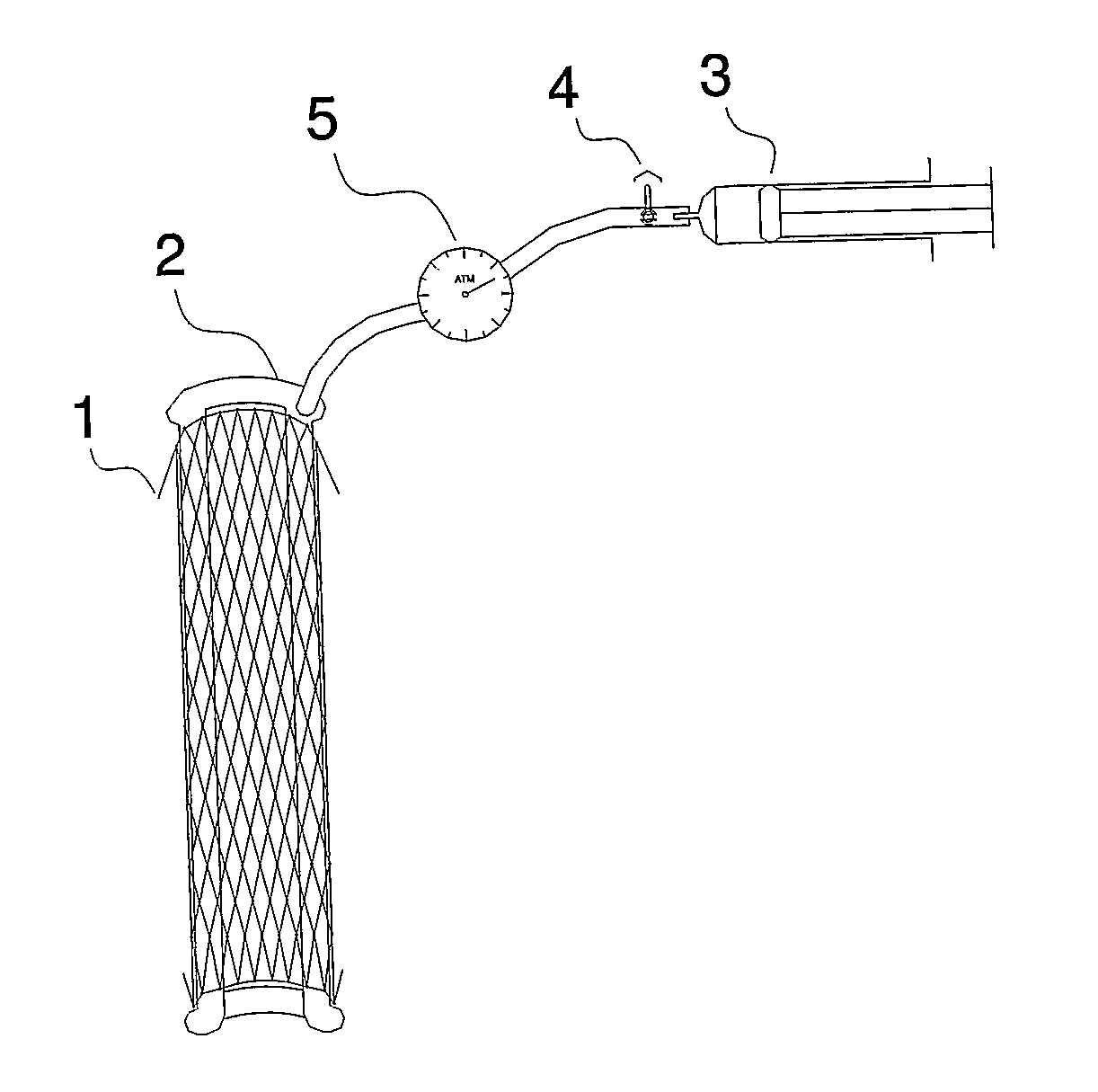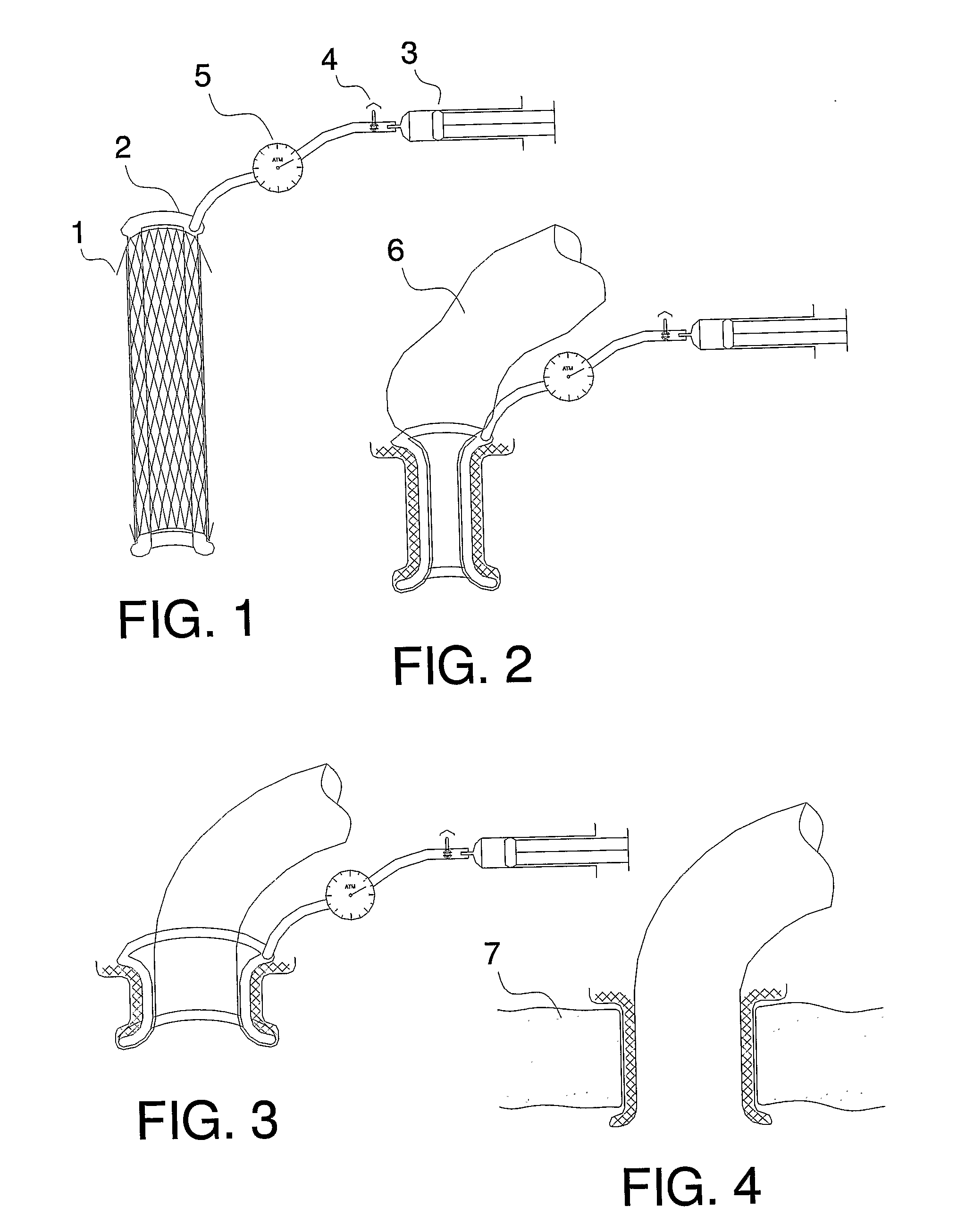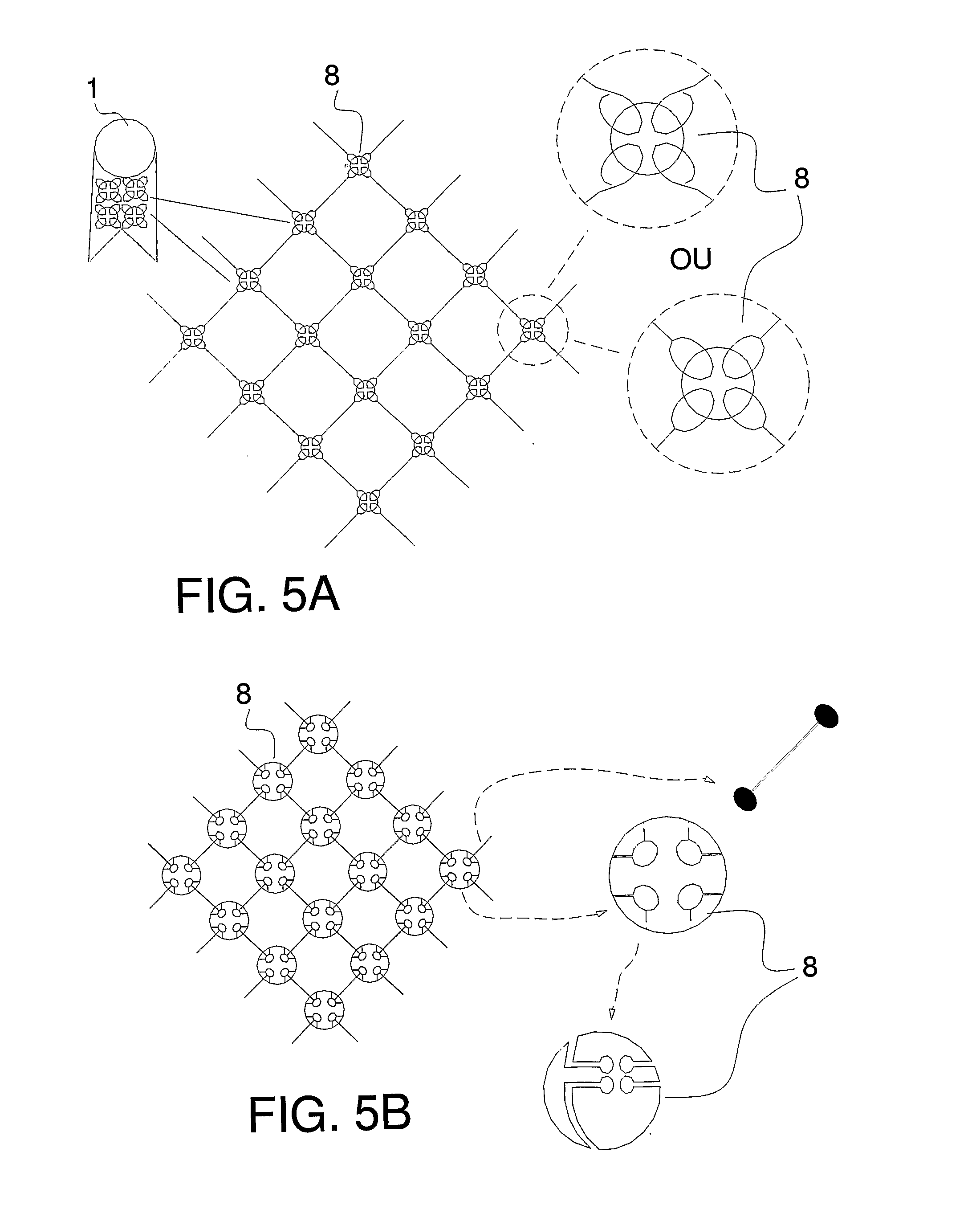Extraluminal stent type prosthesis for anastomosis
a prosthesis and anastomosis technology, applied in the field of extraluminal, external ‘stent’ type prosthesis devices, can solve the problems of limiting its applicability, risk of posterior wall perforation in the aorta, and big risk of kinking
- Summary
- Abstract
- Description
- Claims
- Application Information
AI Technical Summary
Benefits of technology
Problems solved by technology
Method used
Image
Examples
Embodiment Construction
With reference to the drawings, in which like reference numbers indicate identical elements throughout the several views, the figures illustrate one form of the present invention, in form of prosthesis for external stent type anastomosis, extraluminal, and the mesh types.
FIG. 1 illustrates external ‘stent’ type prosthesis, extraluminal, formed by a mesh 1 with drawing and varied sizes, insufflated by a balloon 2, with predetermined maximum sizes. The balloon 2 also with lumen, is inserted in its interior, and insufflated with syringe 3, or other method, under pressures controlled by the manometer 5.
FIG. 2 illustrates the anastomotic aggregate represented by external stent 1, balloon 2 with manometer 5, and the graft 6 that passed through the balloon lumen 2 and recovered externally, the whole extension of the stent 1, which was little and slightly dilated, assuming a form of an asymmetrical reel, with an internal flange slightly minor than the external. The graft is fixed to the ste...
PUM
 Login to View More
Login to View More Abstract
Description
Claims
Application Information
 Login to View More
Login to View More - R&D
- Intellectual Property
- Life Sciences
- Materials
- Tech Scout
- Unparalleled Data Quality
- Higher Quality Content
- 60% Fewer Hallucinations
Browse by: Latest US Patents, China's latest patents, Technical Efficacy Thesaurus, Application Domain, Technology Topic, Popular Technical Reports.
© 2025 PatSnap. All rights reserved.Legal|Privacy policy|Modern Slavery Act Transparency Statement|Sitemap|About US| Contact US: help@patsnap.com



